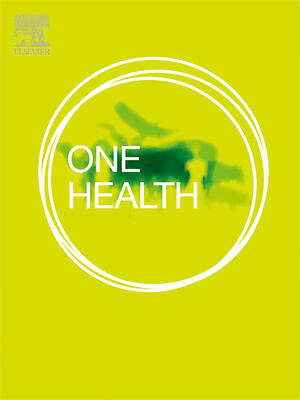
Campylobacter positivity and public health risks in live bird markets, Busia, Kenya: A value chain analysis
Abstract
Introduction: Live bird markets (LBMs) provide integral hubs for 95% of poultry produced for food. Surveillance systems in LBMs serving smallholder farmers in sub-saharan Africa are often non-functional and data about public health risks and emerging pathogens are lacking. Studies in Kenya have reported 29% – 44% Campylobacter-prevalence in poultry. We analyzed such LBMs in Kenya for likely transmission of Campylobacter from poultry to humans.
Methods: We conducted a cross-sectional survey among 186 live poultry traders (LPTs) in 14 LBMs in a region with widespread backyard poultry systems. A pretested structured questionnaire was administered to all LPTs having regular contacts with poultry to gather market data and risk information on campylobacteriosis. Campylobacter was detected in individual cloacal cultures and identified through PCR. The median score obtained from the outcome of risk assessment dichotomized respondents into high and low risk categories. We performed logistic regression at 95% confidence interval (CI) to compare market characteristics and Campylobacter positivity to risk categories to identify LBM-associated public health risks.
Results: Markets had a median of 13 traders. Mean age; 46.3 ± 13.7 years. Majority 162/186 (87.1%) were males. Market behavioral processes by LPTs varied: Only 58.6% LPTs held bird-species separate; onsite slaughter (38.7%); encountered sick-bird (93%) and dead-bird (83%) amidst limited health inspection (31.2%). Campylobacter positivity in live-birds was 43/112 (38.4%, 95% CI: 29.4 – 48.1). Risk information on campylobacteriosis was low 41/114 (36%, 95% C.I: 27.2 – 45.5). Sanitary risks were related to accumulation of litter [adjusted prevalence odds ratio (aPOR): 19.67, 95% CI: 3.01–128.52]. Accessing hand-wash facilities (aPOR: 0.32, 95% CI: 0.13–0.78) and access to information (aPOR: 0.24, 95% CI: 0.09–0.61) were protective.
Conclusion: Sanitary risks were related to poor hygiene. LBMs could be central surveillance sites for Campylobacter. Public health authorities/actors should consider appropriate targeting to improve sanitary measures and Campylobacter control strategies.
Citation
Mbai, J., Njoroge, S., Obonyo, M., Otieno, C., Owiny, M. and Fèvre, E.M. 2022. Campylobacter positivity and public health risks in live bird markets, Busia, Kenya: A value chain analysis. Transboundary and Emerging Diseases 69(5): e1839–e1853.








